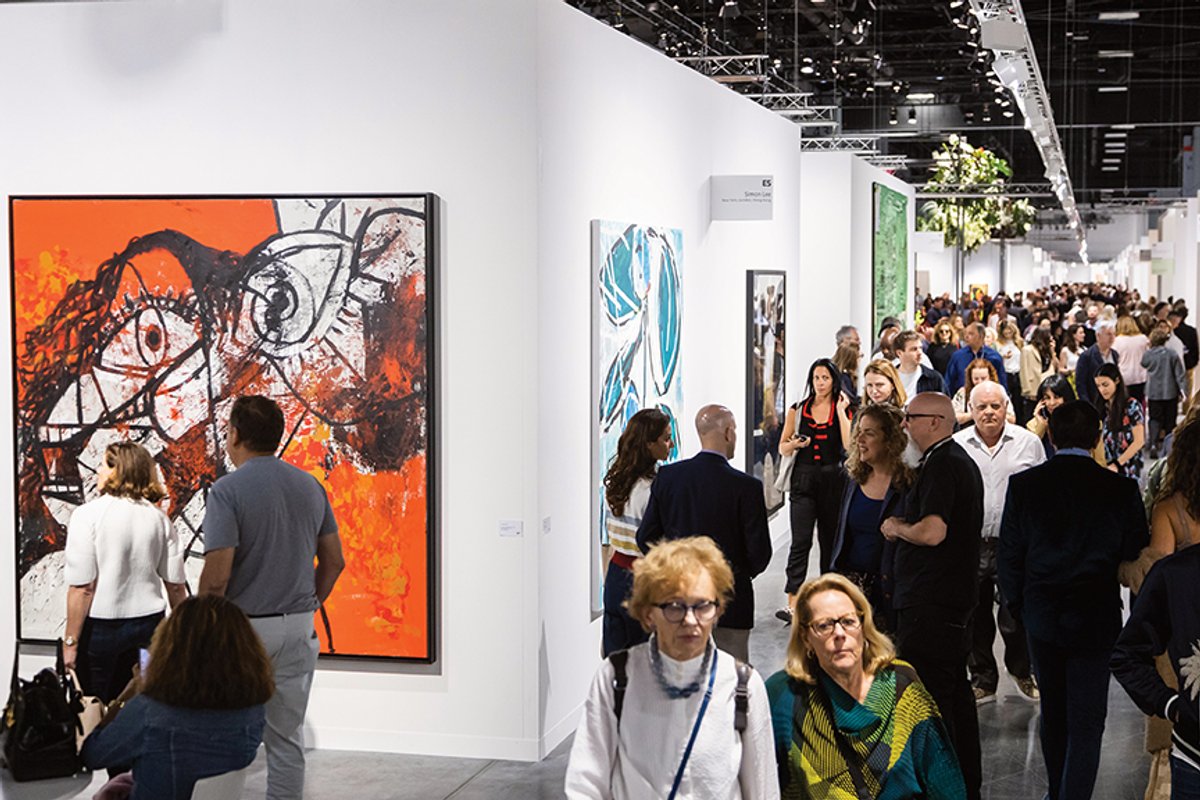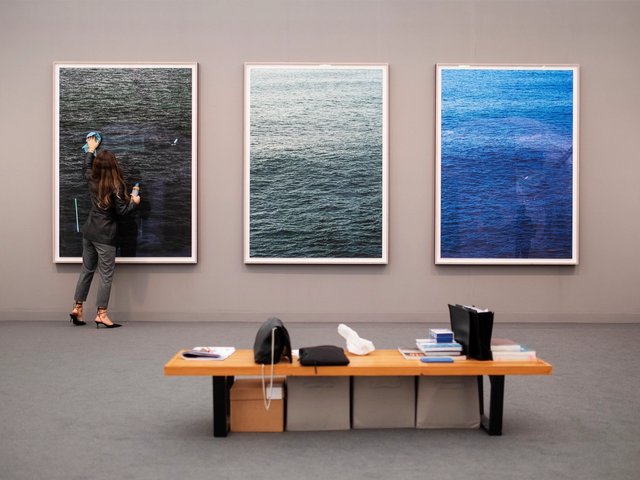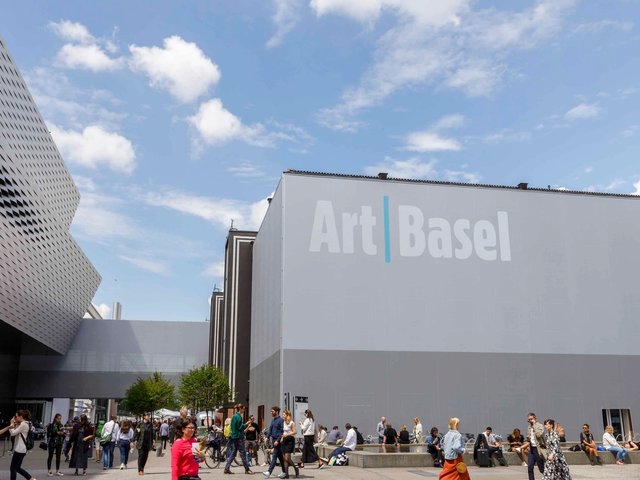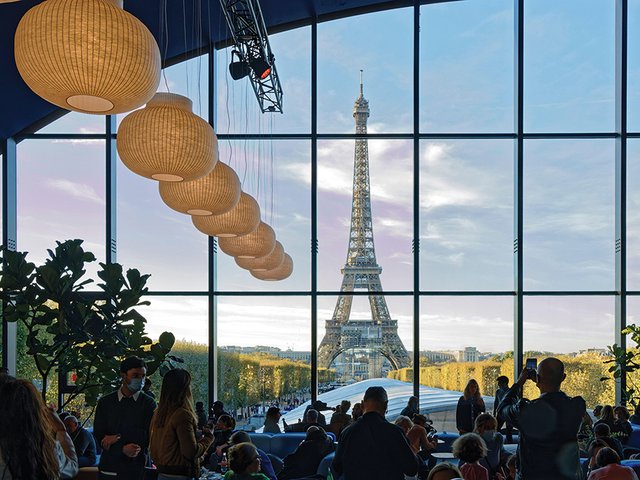Amid all the fizz and glitz at Art Basel in Miami Beach this week, it can be easy to forget that just a few months ago many were asking whether the Covid pandemic had dealt the whole art fair model a mortal blow. During the enforced year of hibernation, The Art Newspaper’s art market editor-at-large Melanie Gerlis took the chance to research and write the previously untold history of art fairs—their roots in Europe’s trading heartlands, the entrepreneurial spirit of their founders to connect a new wave of artists with a new breed of collector and the explosive international growth that had risked making the art fair industry a victim of its own success.
This exclusive extract from the book, which is published in the UK and on e-book worldwide on 1 December (1 April 2022 in the US), asks where the industry goes now as the commercial, environmental and social sands continue to shift. While fairs have shown their resilience, the past year has shown that not only can they do things differently but that they must to stay relevant and keep the art fair money-go-round turning. T.A.N.
Extract from art fair story
The historic and geographic trajectory of the art market and its fairs has mapped the post-war growth of wealth, supported by rising stock markets around the world. Now, threats to democracy and the old-world order, including a gradual eroding of the aspirational middle classes in the West and a coinciding rise of power in the East, point to different times. The cult of ownership, which underpins any market for tangible goods, is no longer a given.
The pre-pandemic reality was that art fairs were already less places where the art was actually sold and more marketing platforms that focused trading activities around certain times in the year. A large amount of business was done via PDFs, emails and WhatsApp, and there is now a myriad of ways to meet prospective clients. For many galleries 2020 was a surprisingly profitable year, largely because the exorbitant costs of doing art fairs was taken out of the equation.
Like giant media companies reliant on subscription and advertising revenues from printed papers, art fairs are gradually accepting that their physical product is only a small part of the picture. It is telling that it was the media scion James Murdoch who finally gave Art Basel’s owners a vital investment in 2020. Frieze, already the brainchild of magazine publishers, appointed the former media executive Simon Fox to its helm.
There has been plenty of talk of the in-person events coming to a natural end. But looking back at the past 60 years highlights just how resilient the art fair industry has proved to challenges, both extrinsic and intrinsic. In this context, the pandemic looks like just one more force for change. It is a sudden one, squeezing ten years of gradual adjustment into one sharp time, but is not necessarily a bad one. The industry has been lucky to have the power and reach of rapid technology, which has kept momentum going and will undoubtedly play a much larger part in a less frantic future. “If the world went back to 2019 and the way we used to travel, incessantly chasing after aeroplanes, we would all be very miserable again,” says Adeline Ooi, the director of Art Basel in Hong Kong.
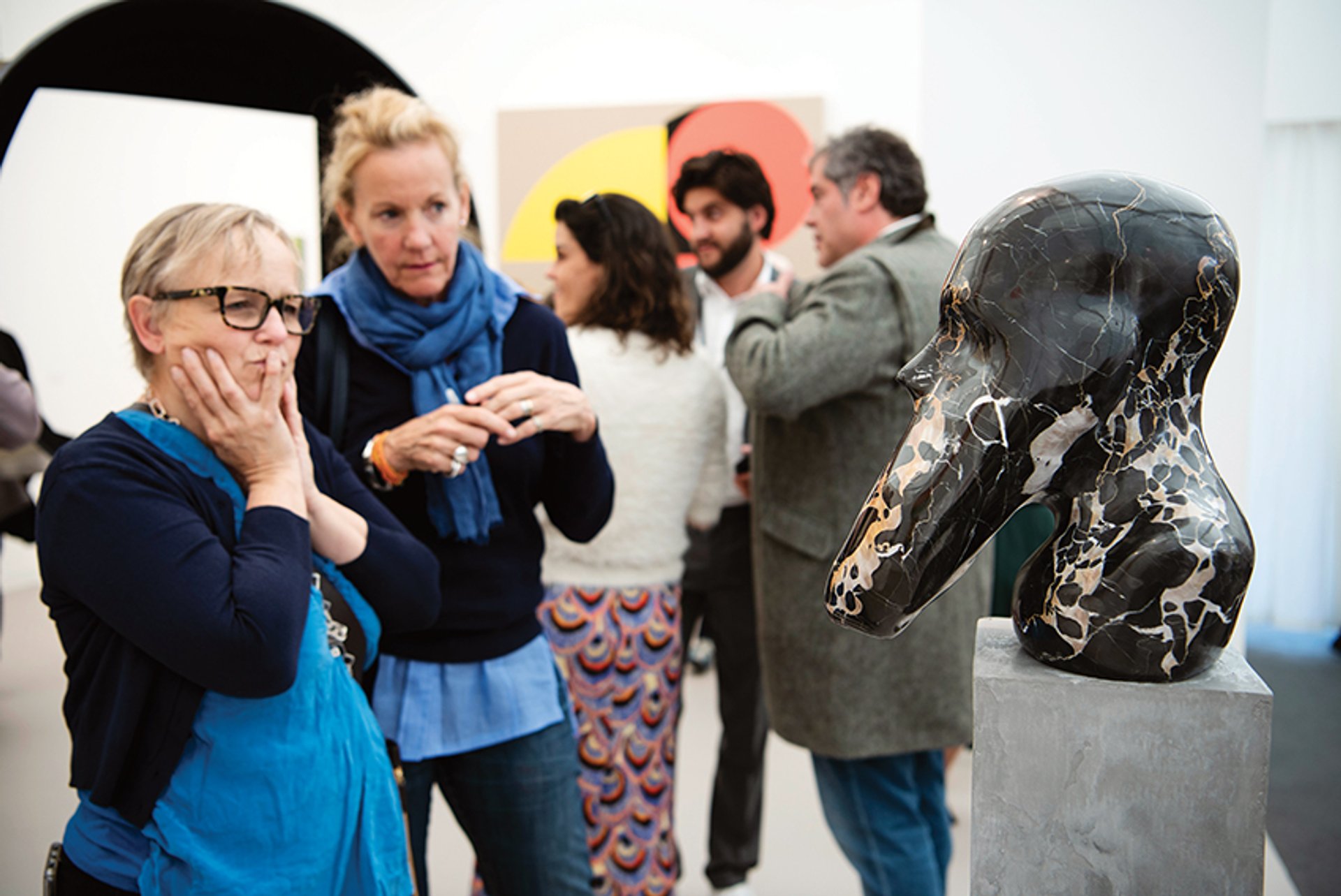
Frieze has a ‘powerful brand, created for the best part of 30 years’. The Frieze Art Fair (pictured in London, 2019) kept its brand alive in 2020 when Frieze Week went ahead without the tents in the park Photo: Linda Nylind
Changing times
Enforced perhaps, but change is already taking hold. ‘Frieze Week’ played well in London in 2020 without either of the fair group’s customary two tents in Regent’s Park, and frankly without much additional impetus from the organisation. What Frieze has is a powerful brand, created for the best part of 30 years, and which can conjure up London, early autumn fun and cutting-edge art. It is not a bad base for reinvention.
It is also a sign of what art fairs have achieved. Art has become much more desirable, accessible and even relevant to new buyers since the post-war years. The popularity of art fairs to deliver the goods has exploded further as the experience economy, first identified at the start of the millennium, has taken hold—now snapped forever on Instagram. There are grumbles about this experience-first context for art, but art fairs have kept many dealerships in business over the decades. Their impact has also gone beyond their own industry. In 2018, it was estimated that the global art trade spent $20.2bn on external support services, with art fairs accounting for the most expenditure and generating the most employment that year.
These needs persist and, so far, there is no complete or convincing alternative way to meet them. But not every fair carries a brand strong enough to attract the sponsorship and wider support that will keep it in business. While art fairs will not disappear completely, I feel safe saying that many of the 365 physical events planned for 2020 will not come back. The majority of those that do will have a more local feel, while continuing to boost their brands with digital content, even once any restrictions have been lifted. Must-see-in-person events will be limited to the bigger-brand fairs, which are likely to consolidate international activity back into just a few geographic centres.
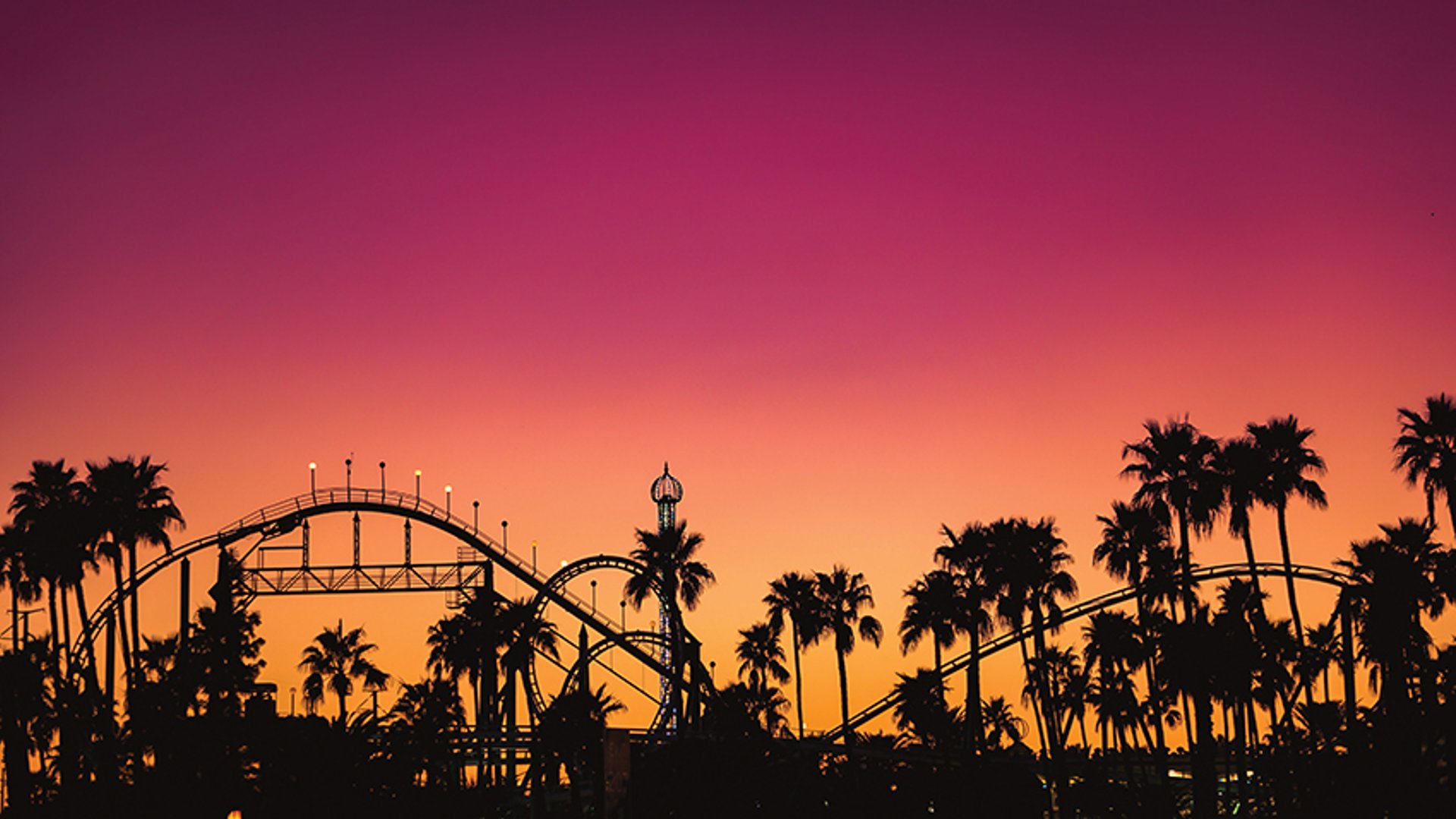
Riding the rollercoaster Photo: iStrfry, Marcus/Unsplash
It is clear, too, that habits have changed and will continue to do so. Those galleries who can afford it have upped their game online, taking cues from the higher-tech auction houses who tapped into the appeal of art-as-digital-entertainment. As we have all adjusted to operating more virtually, the growth of digital art has exploded. Non-Fungible Tokens, that can secure and sell such work on blockchain-based exchanges, have gone from being obscure, nerdy playthings to big-ticket auction items.
Technology has increased the options for sellers and buyers alike. To stay in business, art fairs need to keep pace in this more fluid and self-directed environment. Galleries want to be able to pick and choose where, when and how they show; collectors do not always want far-flung travel and a stream of dinner invitations to punctuate how they buy; the next generation is as comfortable to wander through social media as into a nearby tent. Everyone wants to be more environmentally friendly.
We have all now had the opportunity to see the art world without fairs and the jury is still out on how much we like it. The happy truth is that while sometimes it might be more convenient and agreeable enough to look and buy virtually, we do crave seeing art in person. This is partly because of the sheer impact that art can have up close, and also because it is the basis of a rewarding, collective, social experience—which, in turn, amplifies the art. Lucie Kitchener, the chief executive of London’s Masterpiece, says: “I am a great believer in shared experiences and in our world, the bringing together of people is at its best at an art fair.”
• Melanie Gerlis, The Art Fair Story: A Rollercoaster Ride (Lund Humphries, 2021),
1 December in UK (and e-book worldwide), 1 April in the US


